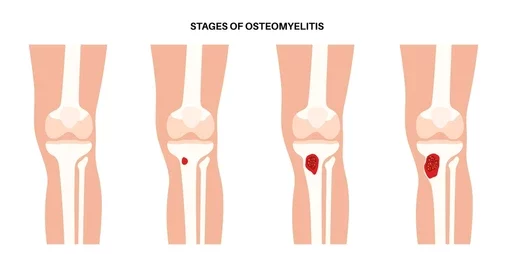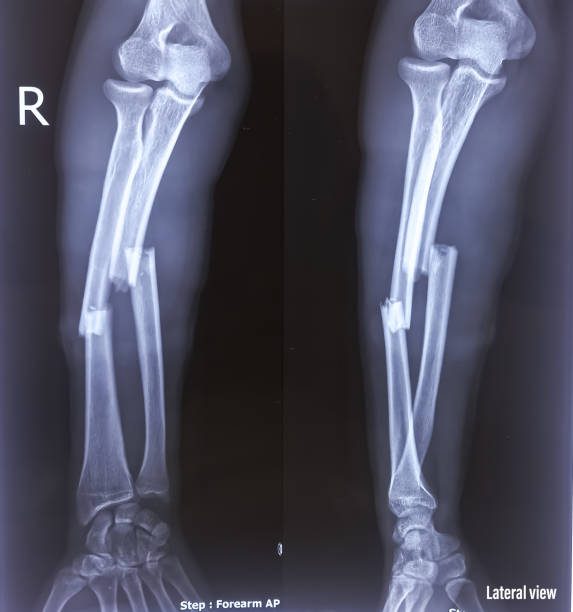by Kimberly Allen R.N.
Osteomyelitis is an infection of the bone or bone marrow. Osteomyelitis can develop at any age, though the site of the infection tends to be different between children and adults. Children tend to develop osteomyelitis in the long bones of the arms and legs where as it most frequently develops in the vertebra in adults.
 Osteomyelitis can be caused by either bacteria or fungi. One route of transmission is through the bloodstream. This occurs when there is an infection in the skin or muscle that is either untreated or ineffectively treated migrates to the blood. Another more common method of transmission is by injury or as a result of another disease like diabetes. A bone fracture especially an open fracture can also lead to osteomyelitis.
Osteomyelitis can be caused by either bacteria or fungi. One route of transmission is through the bloodstream. This occurs when there is an infection in the skin or muscle that is either untreated or ineffectively treated migrates to the blood. Another more common method of transmission is by injury or as a result of another disease like diabetes. A bone fracture especially an open fracture can also lead to osteomyelitis.
People with an impaired immune system have a much greater chance of developing osteomyelitis than those with a normally function immune system. Other factors that can increase your chances of developing osteomyelitis include diabetes, because diabetes affects the circulatory and other systems. People that require dialysis, indwelling urinary catheters, and long term IV therapy using a central line are also at risk for developing osteomyelitis Another group of people that are being diagnosed more and more with osteomyelitis is the IV drug users. Sharing needles, using unsterile needles and not properly cleaning the skin before inserting the needle can lead to numerous infections including osteomyelitis.

There are 2 types of osteomyelitis, acute or chronic osteomyelitis. Acute osteomyelitis occurs when the bone is infected with in 2 weeks of the original infection or injury. There are two ways acute osteomyelitis can develop, the most common is an injury to the bone, like with a fracture, or because of a primary disease like diabetes, this is called contiguous osteomyelitis. The other is when the infection is spread through the bloodstream, known as hematogenous osteomyelitis. This type usually affects young children, though it can develop in adults, especially an impaired immune system like with rheumatoid arthritis or HIV.
Chronic osteomyelitis occasionally begins as acute osteomyelitis. If the acute osteomyelitis is not effectively treated the infection isn’t resolved leaving it to cause damage to the bone leading to increased pain and decreased function.
The symptoms of osteomyelitis tend to differ significantly especially between children and adults. Osteomyelitis tends to develop rapidly in children causing them to have severe pain and tenderness in the area of the bone affected. They usually are unable to use the affected limb because the pain is so severe. On the other hand osteomyelitis tends to develop more slowly in adults. Other symptoms that can be experienced by either children or adults include fever and chills, redness and/or inflammation over the affected area, stiffness and irritability.
Treatment for osteomyelitis consists of antibiotic therapy and pain medications. Occasionally surgery may be needed if the bone becomes abscessed. The type of treatment depends of the severity of the infection as well as the origin of the infection. For example, someone with an impaired immune system will require antibiotic therapy over a longer period of time than someone with an acute injury infection.
When treated early and properly the outlook for people with osteomyelitis is good. However, if you don’t get it diagnosed early and therefore delay treatment the risk of bone damage is much greater.





